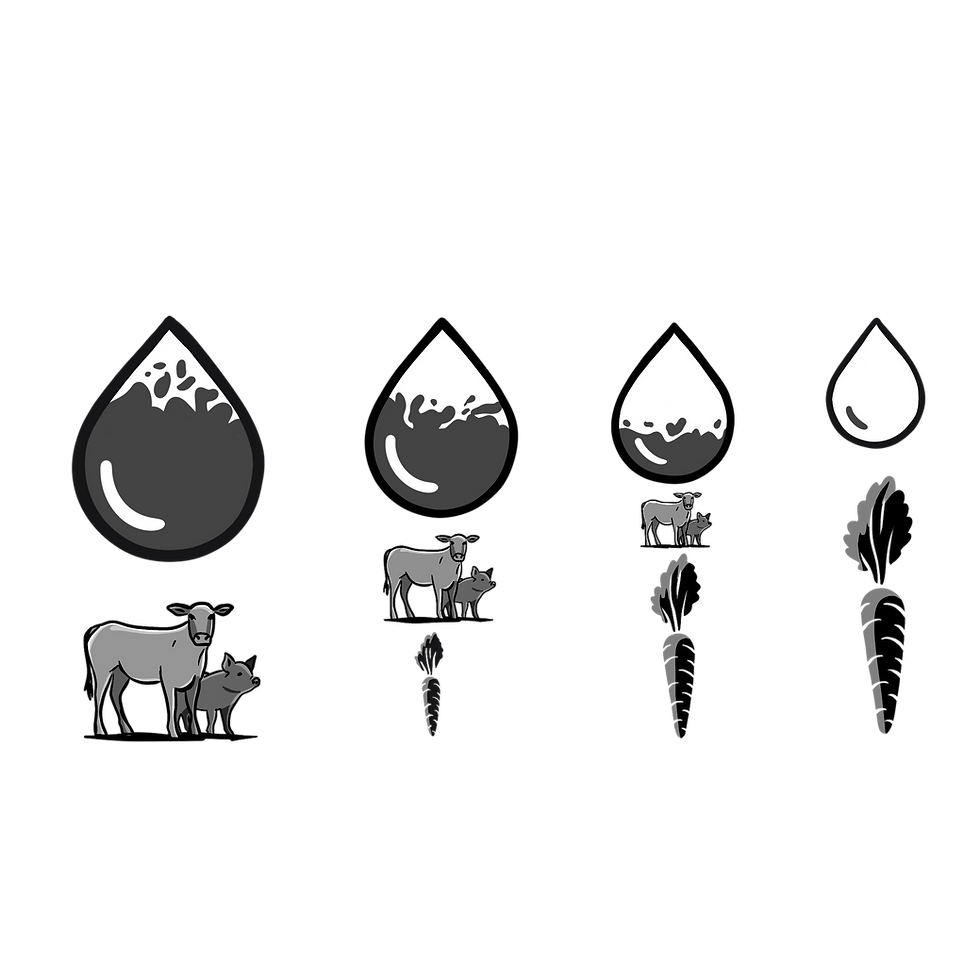Plastic - A Problem That Won't Go Away
- The Young Vegan

- Jan 15, 2023
- 4 min read
1.15 TO 2.41 MILLION METRIC TONNES OF PLASTIC ARE ENTERING THE OCEAN EACH YEAR.
TheOceanCleanup.com
Plastic, it's something that we use everyday, I'm using it every time I turn on my computer, when I put on my coat, when I unwrap a lettuce, the stuff is everywhere. The problem with plastic, though, is the same thing that made us all love it, it lasts forever. Plastic is incredibly chemically stable and for this reason it doesn't rot, well, not quickly. It is estimated that plastics, in general, will take hundreds and even thousands of years to breakdown, but no one knows for sure as they haven't been around that long, they are completely man-made.

A Brief History Of Plastic
Plastic is a word that originally meant "pliable and easily shaped", it has only more recently become a name for a type of material called polymers. The word polymer means "of many parts", and polymers are made of molecules bonded together to make long chains. Polymers can be found in nature, an example is cellulose, the material that makes up the cell walls of plants. The plastics that we use today are not natural, though.
The first synthetic polymer was invented in 1869 by John Wesley Hyatt, who was motivated by the offer of $10,000 from a New York firm for anyone who could create a substitute for ivory to make billiard balls. By treating cellulose, derived from cotton fibre, with camphor, Hyatt discovered a plastic that could be crafted into a variety of shapes and made to imitate natural substances like tortoiseshell, horn, linen, and the desired ivory. In 1907 Leo Baekeland invented Bakelite, the first fully synthetic plastic. Containing no molecules found in nature, this new substance was made to be a substitute for shellac, a natural electrical insulator. Electric appliances were becoming ubiquitous in American life, a good, safe, durable and heat resistant insulator was needed and Bakelite was perfect. Plastic became even more useful during World War II when it was used for parachutes, ropes, body armour and more. Plexiglas was use as an alternative to glass for aircraft windows and plastics were going to be the thing that changed the world, that made everything better.
The Problem With Plastic
This optimism about plastics lasted until people started to realise the you couldn't get rid of the stuff. Plastic debris was first seen in the 1960s. At the time Americans became increasingly aware of environmental problems around them. The dangers of chemical pesticides, the risk of oil spills and the damage that resulted caused concern. When plastic items started washing up on the beaches it added to the fears that people had. Since then plastic use has not only continued it has increased so that now the problem is huge and cannot be easily undone.
During the1970s and 1980s people became more aware of the danger that plastic in particular posed. Bottles and containers washed up in water ways, plastic bags swung from trees after being carried away by the wind and rubbish dumps were overflowing. It wouldn't go away, the plastic just continued to pile up. As a way to calm the negativity the plastic industry said that they had solved the problem, recycling. Waste goes in, new items come out, just like that, so there would be no more plastic waste, right? Except that it didn't work like that in practice. The plastic industry had to encourage countries to take up recycling, they had to get them to collect the waste and then hope that someone would come up with the perfect recycling solution. Most plastic still ended up going to landfill and the plastic to be recycled was often shipped to poorer countries for processing where the material was found to be of such poor quality that it was not usable.
During the 1980s and 1990s the public became aware of the danger of the chemicals that were used to make plastics being found in their food, the very food that it was meant to protect. Chemicals like bisphenol A (BPA), that leach into food, that have been connected with hormone disruption, the development of some cancers and negative effects on the immune system. People were especially concerned about the effect that these chemicals could have on their children.
Not only is plastic choking our oceans and poisoning the food that it contains, people are also eating plastic in their seafood. Microplastics, tiny pieces of plastic, are formed from larger pieces of plastic breaking down from the effect of the sun and the environment. These tiny bits of plastic are eaten by marine life that do not understand that it is not food. The small marine creatures are eaten by a larger creature and the plastic passes up the line, becoming concentrated as the bigger fish eats the smaller fish, then the even bigger fish eats that fish. Animals have been found, washed up on beaches, with stomachs full of plastic, so full in fact that they could not eat any real food anymore and starved to death. The plastic in these animals becomes the plastic on your plate if you decide to eat them.
We all, collectively and individually need to decide to reduce our plastic use. Cooking from scratch instead of buying prepared meals, buying loose vegetables, bamboo toothbrushes, saying no to straws, of any kind, these are all things that we can do. We must reuse what we can, recycle everything that can be recycled and avoid buying any new plastics as much as possible if we want to give ourselves enough time to find a solution to a problem that will not go away.




شيخ روحاني
رقم شيخ روحاني
الشيخ الروحاني
الشيخ الروحاني
شيخ روحاني سعودي
رقم شيخ روحاني
شيخ روحاني مضمون
Berlinintim
Berlin Intim
جلب الحبيب